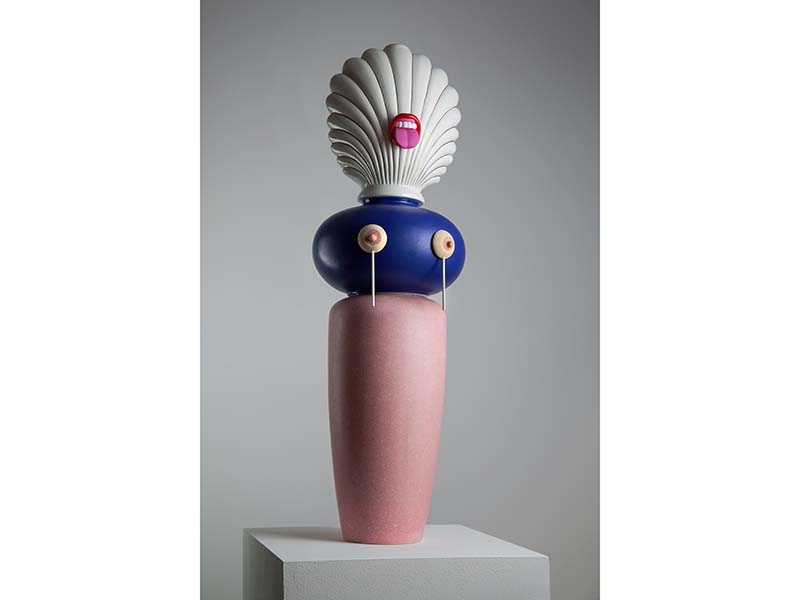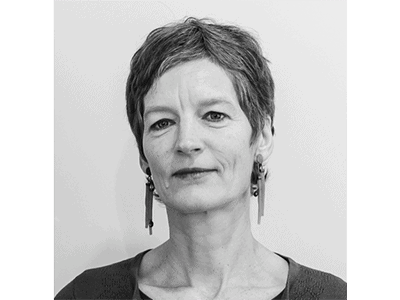February 26–August 30, 2020
mudac, Musée de design et d’arts appliqués contemporains, Lausanne, Switzerland
The mudac’s current exhibition invites you to take a dreamlike stroll through the old walls of the Maison Gaudard, its various rooms full of unusual objects. It’s a way of paying homage to this historic building in the old town of Lausanne, Switzerland, which has been home to the institution for 20 years. The mudac will soon leave this address in order to reopen in 2022 in a tailor-made setting by the Portuguese architectural firm Aires Mateus, next to the new Museum of Fine Arts, which was inaugurated in October 2019. For its last exhibition before the move to Lausanne’s new art district, the mudac displays an astonishing selection of objects and breathes an unexpected “ordinary” life to this building, which was for a long time a private residence.

Each room in the museum replicates a function specific to our daily lives. We start with the living room or the dining room, then it’s the kitchen’s turn, we then cross the library, slip into the bedroom, next the bathroom, stand for a moment in the music room or the games room, before continuing to the garage. Visiting this exhibition, with its at once theatrical and discreet staging, is like entering a friend’s house. It’s both welcoming and intimidating by the familiarity of its apparent living structure. The visitor feels like a personal and privileged guest. The entire mudac team, open to the world and generous like a sensitive host, has selected objects to inhabit this interior, each curator revealing his or her own favorites, drawn for the most part from the museum’s rich collections. The presentation is deliberately subjective and personal. The team also encourages the public to virtually present its own choices of extraordinary everyday objects, to share and follow on Instagram. Knowing the personal stories that tell the relationship between an object and its owner forcibly directs our gaze.
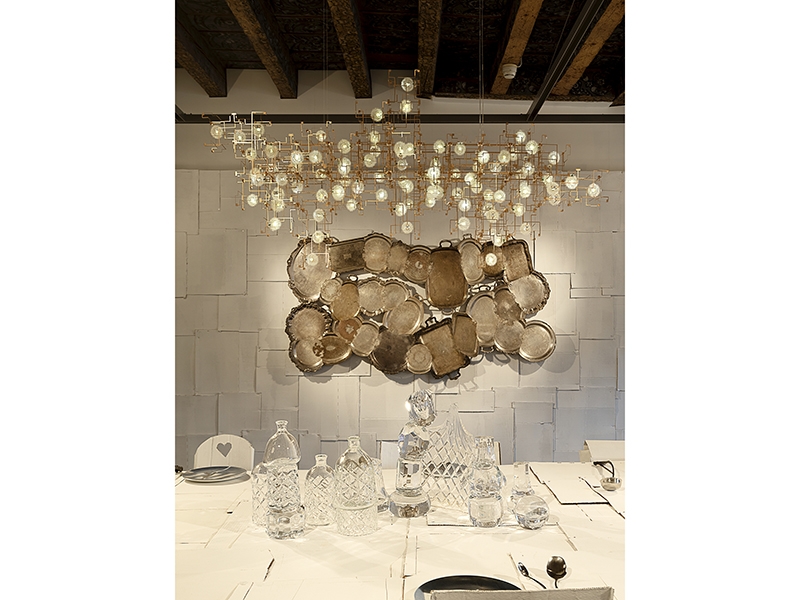
To arrange the objects, the mudac proposes a scenography that suggests imaginary domestic situations in the museum rooms. The décor reconstructs an interior with fake furnishings in an otherworldly monochrome, transporting the visitor into a narrative atmosphere. “I turned it into a dream space using corrugated cardboard and white paint,” explains Sébastien Guenot, who is in charge of the scenography. It’s an immersive presentation where fiction and reality are associated.
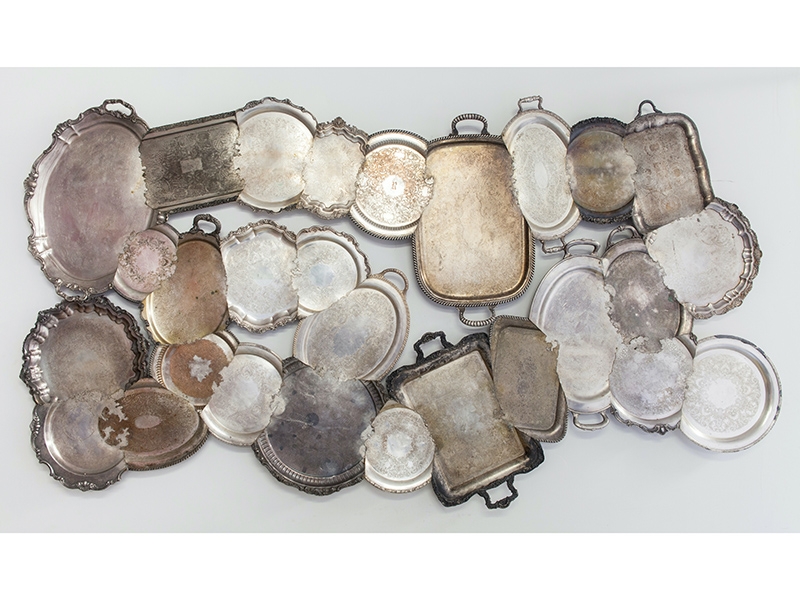
Sometimes discreet, sometimes very apparent, the cardboard has invaded everything. The visitor has the impression of walking on a theater set where each piece of furniture and each object has significant importance and is situated in a specific place, while remaining inanimate. With its coarse and rough manufacture, its meticulous details, the cardboard decor on which the objects are displayed takes a dominant focus until the works almost disappear. Perhaps this mimics real life, real everyday life, which can make our objects or artifacts fade away, a part of our furniture, now transparent or invisible.
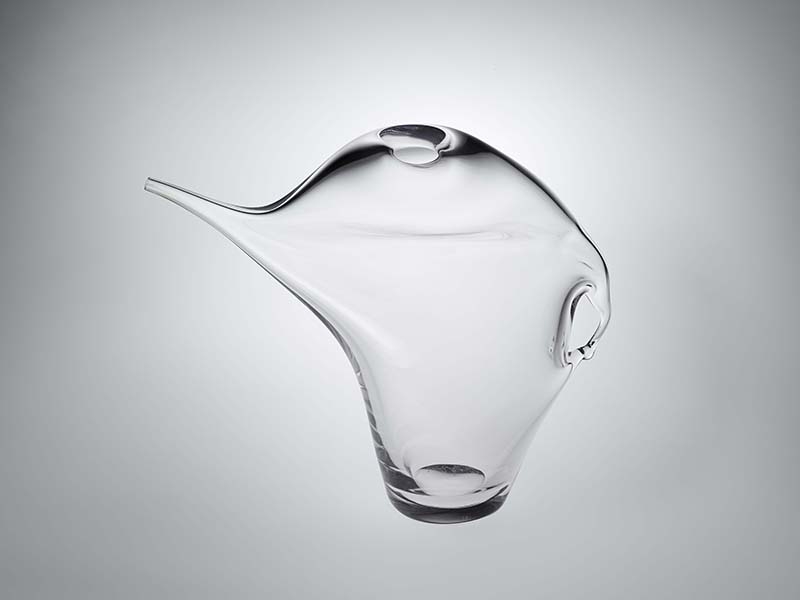
The beautiful publication that accompanies the exhibition becomes a precious accomplice to help visitors find the hidden treasures. “The exhibition can be enjoyed in stages,” reads an excerpt. “You can walk around the exhibition rooms and be amazed by the objects; you can also go deeper into the exhibition and have fun deciphering the associations suggested by the curators thanks to the descriptive texts in the publication; finally, you can find in this presentation themes reflecting the favourite subjects of contemporary creation such as questioning life, emotion, provocation, violence, the relationship with everyday objects, diversion, trompe l’oeil, and references to the past.”

It’s a domestic setting placed between past, present, and fiction, containing objects that are part of our daily lives and that also communicate with the friends who visit us. The works presented are oversized or tiny, playful, bestial, vegetal, disturbing, or marvelous. The exhibition succeeds in its desire to eliminate the sacred nature of the works and make the banality of everyday life extraordinary, with an exclamation mark! Deputy Director Claire Favre Maxwell points out, “Each work in the exhibition is a form of commentary on our relationship to everyday life. It removes, prevents, and aesthetically pleases the everyday, but there is always this relationship to the place where we live, which is quite typical of a design object.”

This humanized scenography allows a close relationship and makes the works surprisingly accessible. In the open drawer of the bedside table, in the intimacy of the bedroom, we discover the fabulous Fur Ring, in gilded brass with fur, created by the Swiss artist Meret Oppenheim, in 1978 (referring back to the Fur Bracelet created in 1936). The work, in this context of a private home, seems extremely close to the finger itself, immersed in situ.
Next to it is The Bed, a work created (in 1997) by the Egyptian artist Ghada Amer. It’s an embroidered mattress, cut out and suggesting the silhouette of a couple. This proximity offers a refined reading and enhances the relevance of the subject. The two works materialize the questioning common to these female artists on the role of women in society.
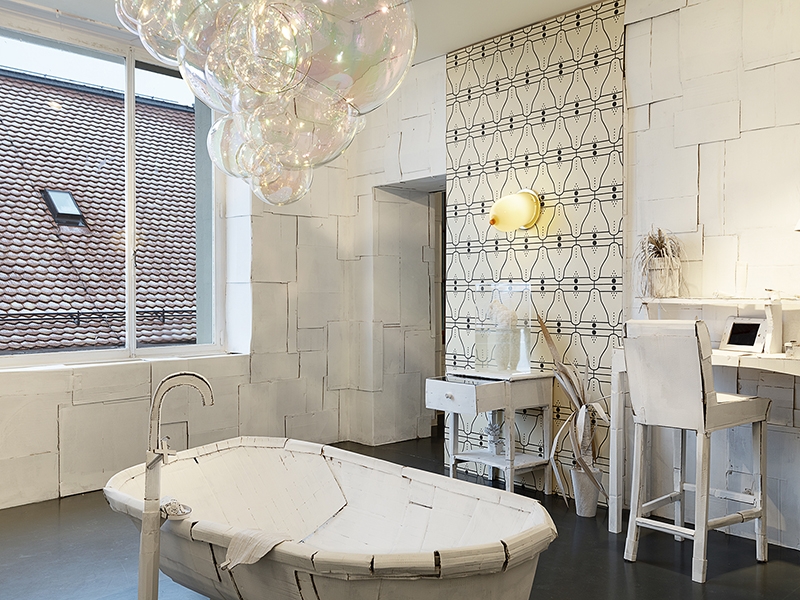
The dialogue between the works is particularly favorable in these suggested universes. In the bathroom, a series of self-portraits, Cosmetic Surgery Kingdom, by the South Korean artist Bora Hong, takes the place of the mirror above the Soft Washbowl (1997), by the Dutch industrial designer Hella Jongerius. The numerous possibilities for plastic intervention that Hong suggests on the images of her face challenge the notion of an iconic standard of beauty. The softness of the washbasin responds insistently to this malleability of appearance.

In the cramped kitchen, the Palestinian artist Mona Hatoum’s Grater Divide, a set of three giant graters forming a screen, dominates the space. But the view is liberated by several pieces by the Swiss jewelry artist David Bielander: his Garlic and Corncob pendants. These figurative works testify to the artist’s desire to decontextualize objects from their initial environment in order to impose a shifted reading. In Extraordinaire!, placing Garlic and Corncob in the context of the kitchen and food risks minimizing their impact. It’s a daring, somewhat perilous act.

The domestic context here leads us to wonder about the place we give to everyday objects, perhaps especially jewelry. How do we examine the relationship we have with our pieces?
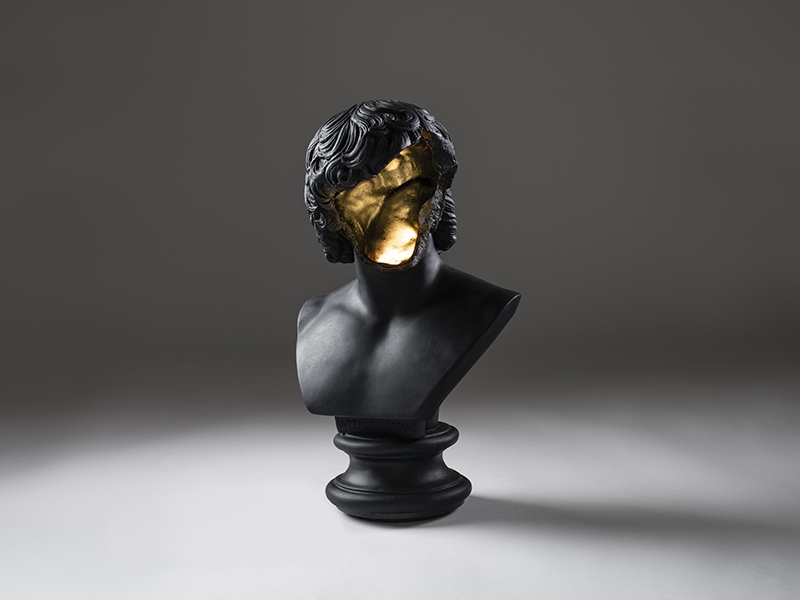
For several weeks, due to the current situation with COVID-19, most of us have been forced to spend more time at home than usual, and our familiar interiors have been perceived differently. During the closing, the mudac’s director, Chantal Prod’Hom, insisted, “We are here for the people, it’s our mission! We have to try to exist differently, to exist virtually. Everything is extraordinary, what a current affairs term!”
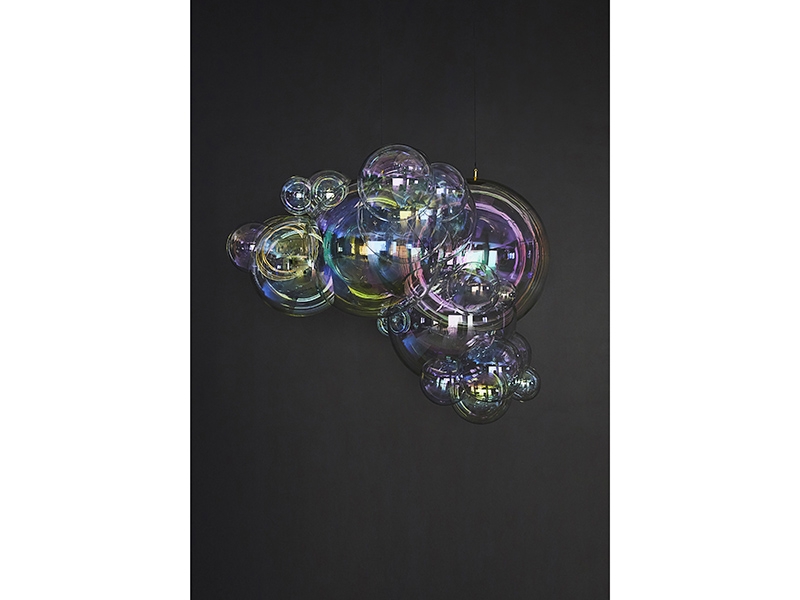
The mudac once again began welcoming visitors on May 12, and we can look forward to returning to this familiar and anonymous but personal universe, this time with a sensitive eye. It’s also an opportunity to see one last time the outstanding pieces of jewelry belonging to the mudac collection or to the Swiss Confederation’s collection, before they move to a new setting. What an extraordinary adventure!
